What we heard
S.S. Klondike National Historic Site
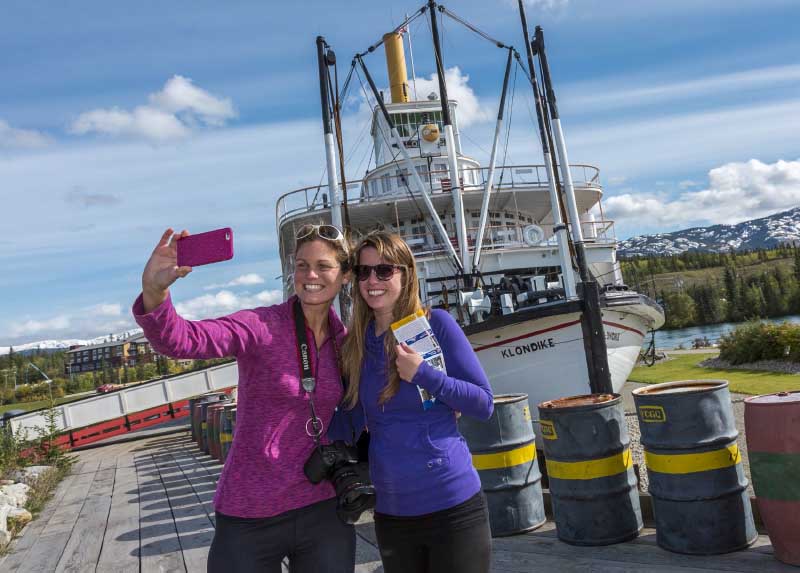
What we heard
Feedback on the draft S.S. Klondike National Historic Site of Canada Management Plan
Introduction
The Parks Canada Agency Act requires Parks Canada to prepare and review management plans for each heritage place every 10 years. Management plans are developed through consultation with Indigenous people, partners, stakeholders and the public, and are intended to serve as the key accountability document to Canadians for Parks Canada’s management decision-making.
The S.S. Klondike National Historic Site’s (NHS) last management plan was signed in 2010 and is now under review. The new management plan includes a long-term vision and strategic direction, and will guide decisions for protecting, presenting and operating the site.
Consultation process
In order to facilitate meaningful opportunities to contribute to the development of a management plan for the S.S. Klondike NHS, a two-phased engagement plan was implemented:
Phase 1 — Preliminary Consultation
In August 2019, Parks Canada sent a newsletter to key stakeholders to consult on primary elements to be considered in the development of the draft management plan.
Phase 2 — Public Consultation
In spring/summer 2021, stakeholders and the public had an opportunity to comment on the draft management plan during an eight-week period of consultation that included a virtual engagement session, an online comment card and on-site meetings with stakeholders.
Thank you!
This report provides a summary of the feedback received on the draft management plan during Phase 2 — Public Consultation, with the intent to give a general sense of what was heard from stakeholders and the public during the engagement period. Parks Canada appreciates the time and consideration everyone gave to reviewing and commenting on the draft management plan – thank you!
What we heard: Online comment card
For the duration of the eight-week consultation period, Parks Canada encouraged the public to submit feedback on the draft management plan through an online comment card. The anonymous survey consisted of 10 questions gauging the level of support for the plan’s draft vision and key strategies as well as seeking open-ended comments on the content and plan priorities. Feedback was received from 66 separate comment cards, though not every question was answered in each card, which accounts for the differences in the number of responses presented in the data below.
About the respondents
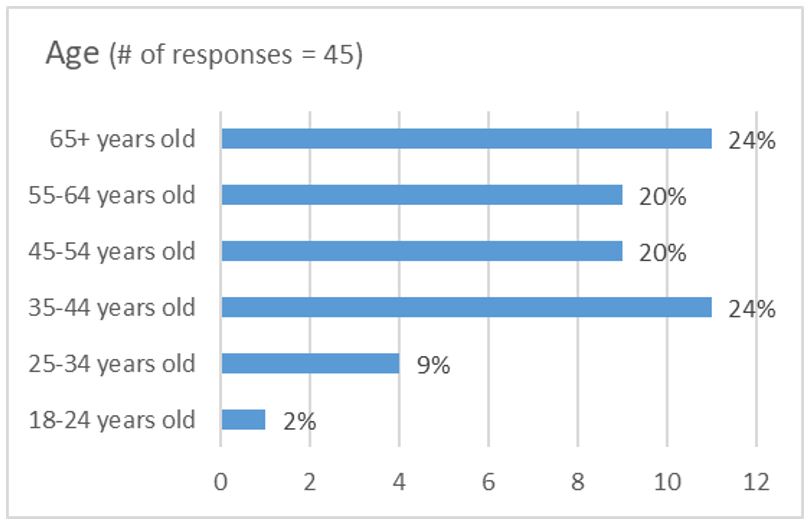
Graph 1: Age of respondents — Text version
| Age of respondents | Total | % |
|---|---|---|
| 18-24 years old | 1 | 2.22 |
| 25-34 years old | 4 | 8.89 |
| 35-44 years old | 11 | 24.44 |
| 45-54 years old | 9 | 20.00 |
| 55-64 years old | 9 | 20.00 |
| 65+ years old | 11 | 24.44 |
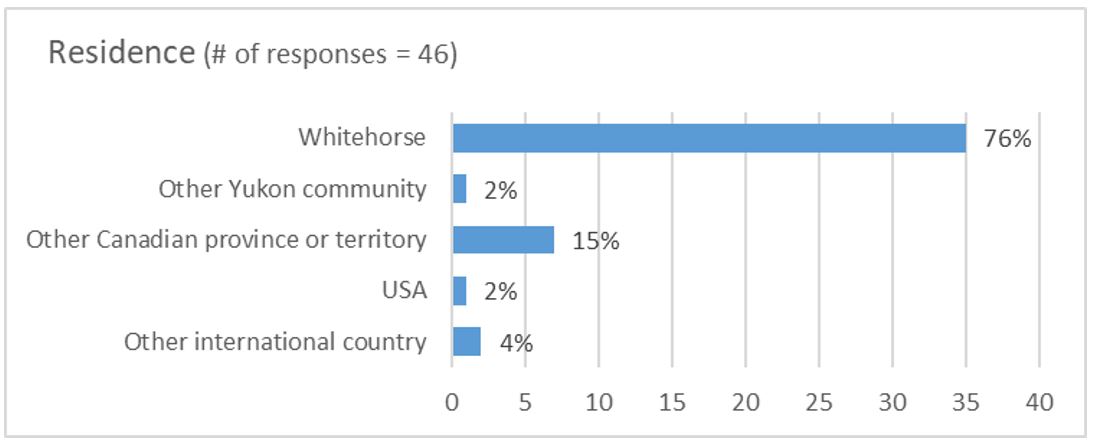
Graph 2: Residence of respondents — Text version
| Residence of respondents | Total | % |
|---|---|---|
| Other international country | 2 | 4.35 |
| USA | 1 | 2.17 |
| Other Canadian province or territory | 7 | 15.22 |
| Other Yukon community | 1 | 2.17 |
| Whitehorse | 35 | 76.09 |
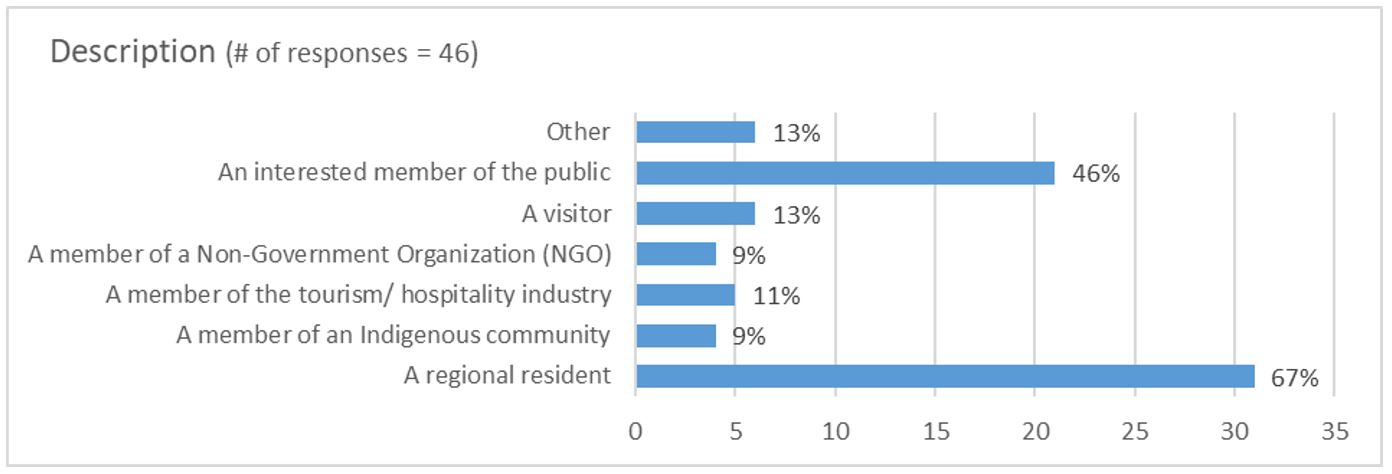
Graph 3: Description of respondents — Text version
| Description of respondents | Total | % |
|---|---|---|
| A regional resident | 31 | 67.39 |
| A member of an Indigenous community | 4 | 8.70 |
| A member of the tourism/ hospitality industry | 5 | 10.87 |
| A member of a Non-Government Organization (NGO) | 4 | 8.70 |
| A visitor | 6 | 13.04 |
| An interested member of the public | 21 | 45.65 |
| Other | 6 | 13.04 |
Level of support for vision and key strategies
Respondents were asked to read the draft plan and provide their level of support for the draft vision and key strategies. There was significant support for these elements as presented, with at least 86% of respondents indicating that they “Strongly support” or “Somewhat support” the draft vision and key strategies.
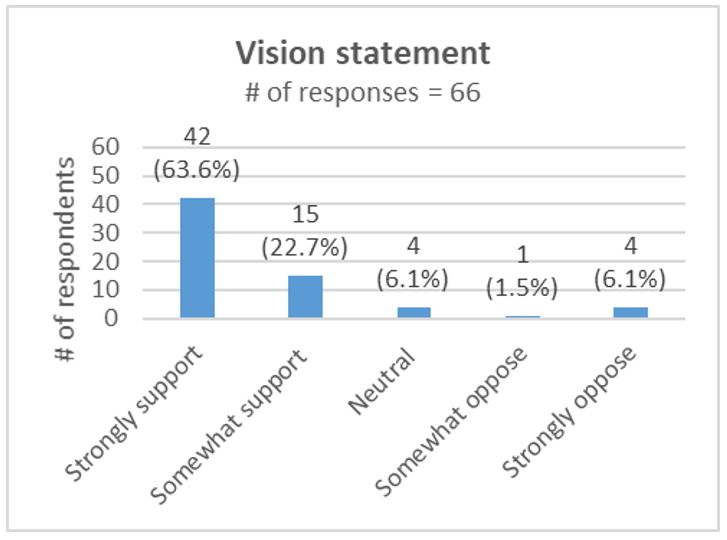
Graph 4: Vision statement — Text version
| Level of support | Total | % |
|---|---|---|
| Strongly support | 42 | 63.64 |
| Somewhat support | 15 | 22.73 |
| Neutral | 4 | 6.06 |
| Somewhat oppose | 1 | 1.52 |
| Strongly oppose | 4 | 6.06 |
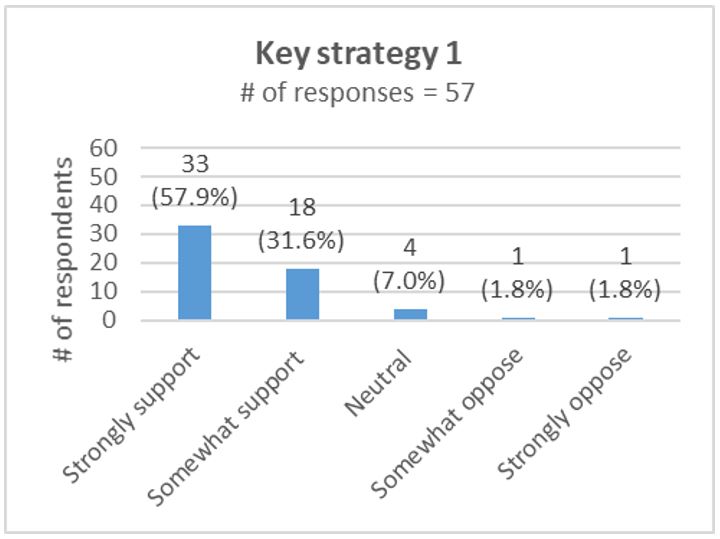
Graph 5: Key strategy 1 — Text version
| Level of support | Total | % |
|---|---|---|
| Strongly support | 33 | 57.89 |
| Somewhat support | 18 | 31.58 |
| Neutral | 4 | 7.02 |
| Somewhat oppose | 1 | 1.75 |
| Strongly oppose | 1 | 1.75 |
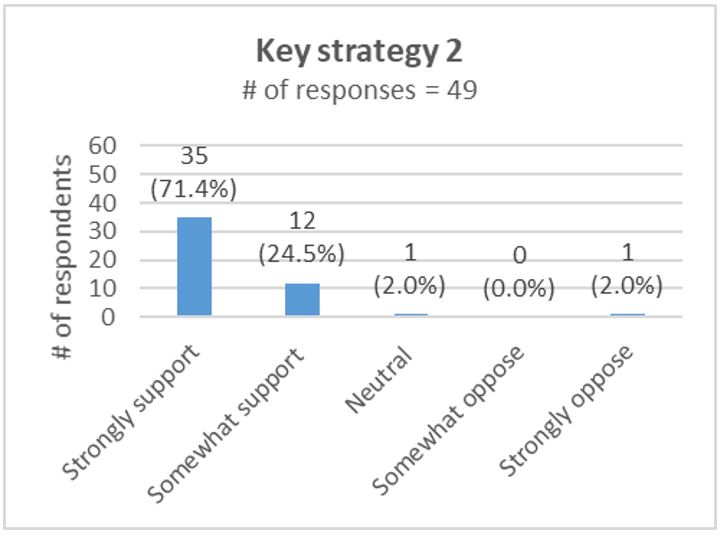
Graph 6: Key strategy 2 — Text version
| Level of support | Total | % |
|---|---|---|
| Strongly support | 35 | 71.43 |
| Somewhat support | 12 | 24.49 |
| Neutral | 1 | 2.04 |
| Somewhat oppose | 0 | 0.00 |
| Strongly oppose | 1 | 2.04 |
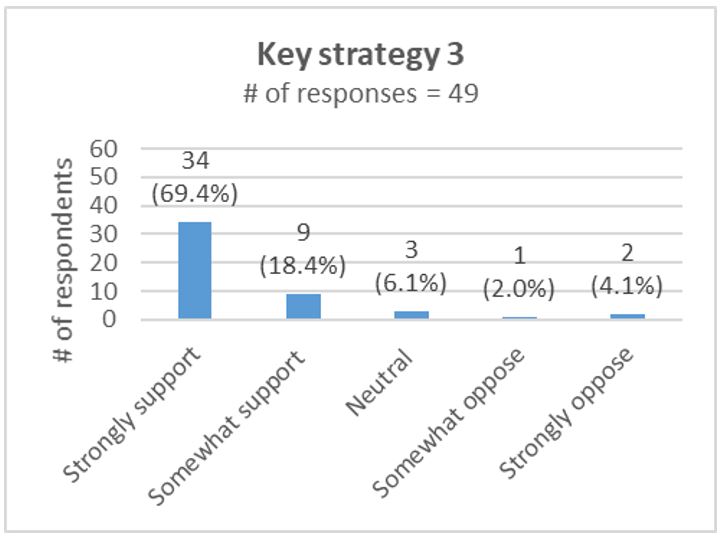
Graph 7: Key strategy 3 — Text version
| Level of support | Total | % |
|---|---|---|
| Strongly support | 34 | 69.39 |
| Somewhat support | 9 | 18.37 |
| Neutral | 3 | 6.12 |
| Somewhat oppose | 1 | 2.04 |
| Strongly oppose | 2 | 4.08 |
Comments and key themes
In addition to indicating the level of support for the vision and key strategies, respondents were also given the opportunity to provide open-ended comments on these plan elements. Approximately 15% of the comments related to specific wording changes that have been read and considered by managers. In addition, several key themes emerged from the comments that are summarized below.
Make conservation of the vessel and ongoing maintenance at the site a priority
Many concerns were noted around the overall condition of the S.S. Klondike and site grounds. Comments expressed the need to take immediate action to protect the vessel so that it can be fully open to visitors. It was also noted that while conservation efforts are undertaken, Parks Canada should ensure regular maintenance of the boat and the grounds remains a top priority and that construction infrastructure does not negatively impact the visitor experience.
Recognize First Nations’ history
Many comments reflected support for continuing the work to recognize First Nations’ history and stories related to the site and the era of riverboats. Suggestions included developing new exhibits inside the boat, recording oral histories, listening to knowledge holders, and appropriately compensating First Nations participants for their contributions. Some comments warned that this work should not be done as token gestures.
Improve experiences and services for visitors
Many comments touched on improving the visitor experience at the site, in particular harnessing new opportunities on the boat, at the visitor centre and on the grounds. Suggestions included a campfire pit with associated programming, interpretation by First Nations’ representatives, a viewing deck and more sitting spots, a community garden, tours with knowledgeable people, creative food and beverage services, more S.S. Klondike-themed merchandise, more special events, and new displays, artifacts and photographs.
Adjust fees to encourage visits from locals
Several comments regarding fees indicated that Parks Canada should consider adjusting fees to encourage visitation from locals. Suggestions included discounts and special offers for locals, focusing on finding revenue gains from out-of-territory visitors, and offering seasonal memberships.
Improve accessibility at the site
Several comments noted that efforts should be made to improve accessibility at the site as a whole. Specific issues were noted with accessing the visitor centre and theatre.
Engage all stakeholders and listen to the feedback
It was noted that Parks Canada should ensure a wide breadth of stakeholders are involved in the development of the management plan and demonstrate that we are listening to the feedback.
Management priorities
Respondents were also asked to reply to the question: “What is the most important thing Parks Canada should focus on at the S.S. Klondike NHS over the next 10 years?” More than half of the comments received related to protection and restoration of the S.S. Klondike.
Remaining comments were spread across a range of other priorities, including services and visitor experience, First Nations history, education and outreach, accessibility, historical research and balancing protection with visitor experience.
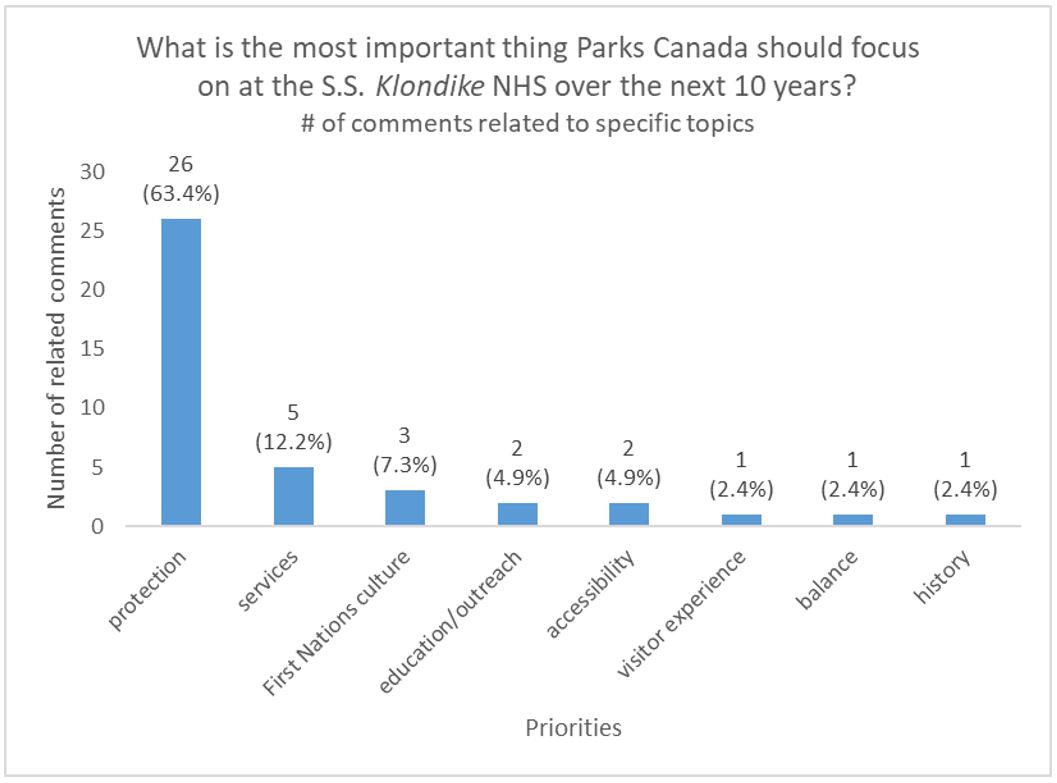
Graph 8: What is the most important thing Parks Canada should focus on at the S.S. Klondike NHS over the next 10 years? — Text version
| Topics | Total | % |
|---|---|---|
| Protection | 26 | 63.41 |
| Services | 5 | 12.20 |
| First Nations culture | 3 | 7.32 |
| Education/outreach | 2 | 4.88 |
| Accessibility | 2 | 4.88 |
| Visitor experience | 1 | 2.44 |
| Balance | 1 | 2.44 |
| History | 1 | 2.44 |
What we heard: stakeholders
Meetings
Virtual meetings were offered in English and French. In response to the interest from stakeholders and the public, only one online engagement session was required. A follow-up on-site meeting was also held at the S.S. Klondike NHS. Representatives from the following groups attended the virtual engagement session and/or the on-site meeting:
- Yukon Heritage Resources Board
- Ta'an Kwäch'än Council – Lands, Resources and Heritage
- Yukon Transportation Museum
- Ta'an Kwäch'än Council Elder
- Government of Yukon – Department of Tourism and Culture
- Yukon Historical and Museums Association
- City of Whitehorse
Stakeholder comments
Comments from the stakeholder meetings echoed a number of sentiments received from respondents to the online comment card, including:
- Concerns about the overall condition of the S.S. Klondike and site grounds.
- Ensure that regular maintenance remains a top priority while working to determine the long-term plan for asset protection.
- Support for further recognition of the important role First Nations people played in the operation of the S.S. Klondike and other riverboats, and the development of associated programming (e.g. having elders on site to interact with visitors). It was suggested that Parks Canada develop opportunities to increase First Nations’ representation amongst site staff.
- Improve services and experiences for visitors and Yukoners through more community events, offering more S.S. Klondike-specific merchandise and developing education and outreach products that would benefit people who are not able to visit the site in person. It was suggested that Parks Canada review their special event permit process with the intent to reduce barriers for larger events, and that the City of Whitehorse and Parks Canada formalize stronger partnerships and work collaboratively on events.
- As much as possible, Parks Canada should improve accessibility for visitors of all abilities, ages and backgrounds.
In addition, discussions at the stakeholder meetings included the following sentiments and suggestions:
- Continue to expand the site’s overall story by linking to the entire river system and the connected communities.
- The heritage conservation story is important and more should be done to communicate the challenges associated with taking care of the boat and the site with the general public.
- Ensure security measures and systems are adequate to protect the vessel from things like fire and vandalism.
- The site is often assumed to be the main territorial visitor centre by visitors and there are opportunities for Parks Canada and the Government of Yukon to work together toward mutually beneficial goals by leveraging that assumption.
- The vision should reflect the impacts on the territory, communities and those whose livelihoods relied on riverboats following the end of that era.
The final plan
Site management plans are intended to reflect the values and views of Canadians. Engagement processes are key instruments for connecting with Indigenous peoples and other Canadians about the management of national historic sites.
The feedback received during the consultation process helped to inform revisions to the draft S.S. Klondike National Historic Site of Canada Management Plan.
Thanks to the perspectives shared during the consultation process, meaningful changes to the draft plan were made in several areas, including the plan vision and key strategies related to cultural resource management and conservation, visitor experience and tourism, and partnerships.
While management plans are intended to provide high-level strategic direction focusing on desired outcomes rather than prescribed actions, Parks Canada appreciates the many creative ideas that participants provided during the consultation period. These action-oriented suggestions have been recorded by site managers and will help inspire initiatives going forward as we implement the final management plan.
Contact us
For more information about the management plan or about S.S. Klondike National Historic Site of Canada:
S.S. Klondike National Historic Site
10 Robert Service Way
Whitehorse YT Y1A 2B5
Canada
Email: pc.ssklondikeinfo.pc@pc.gc.ca
Phone: 1-867-667-4511 (Summer)
Phone: 1-867-667-3910 (Winter)
- Date modified :